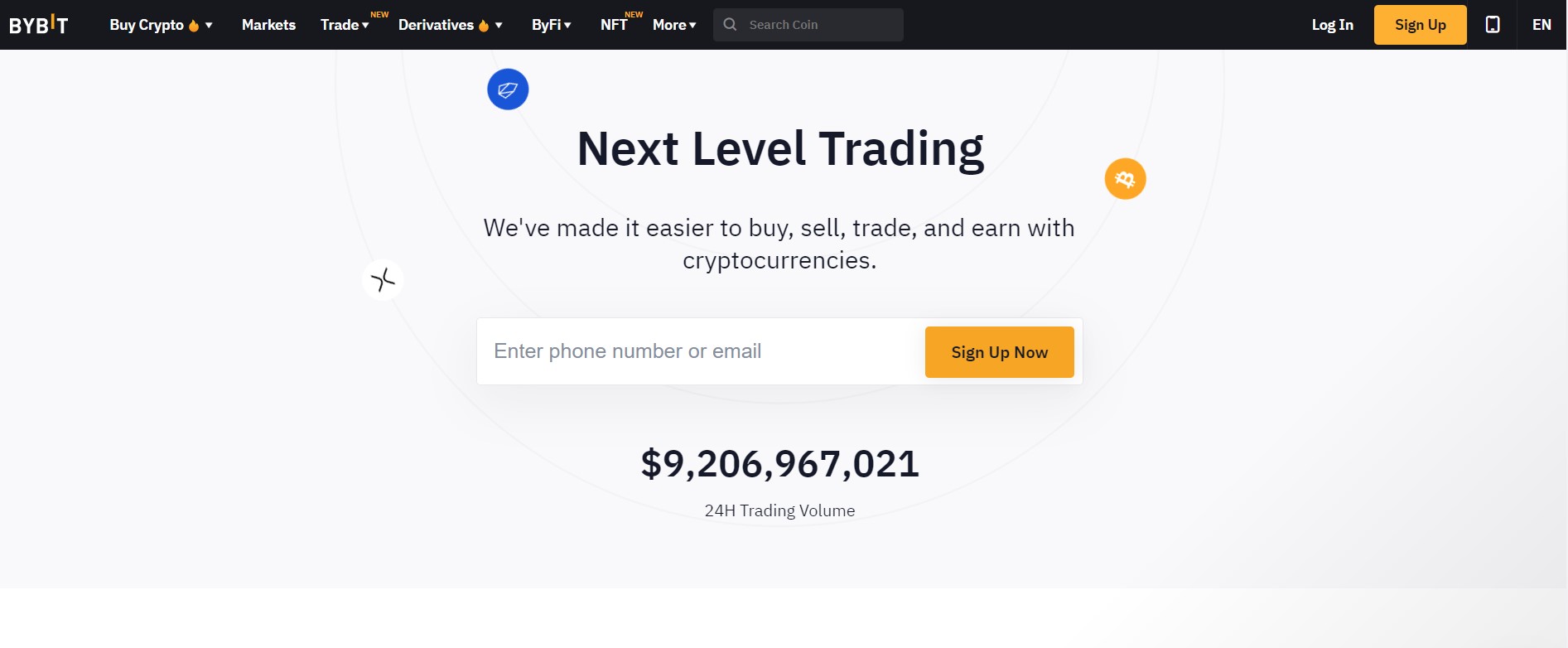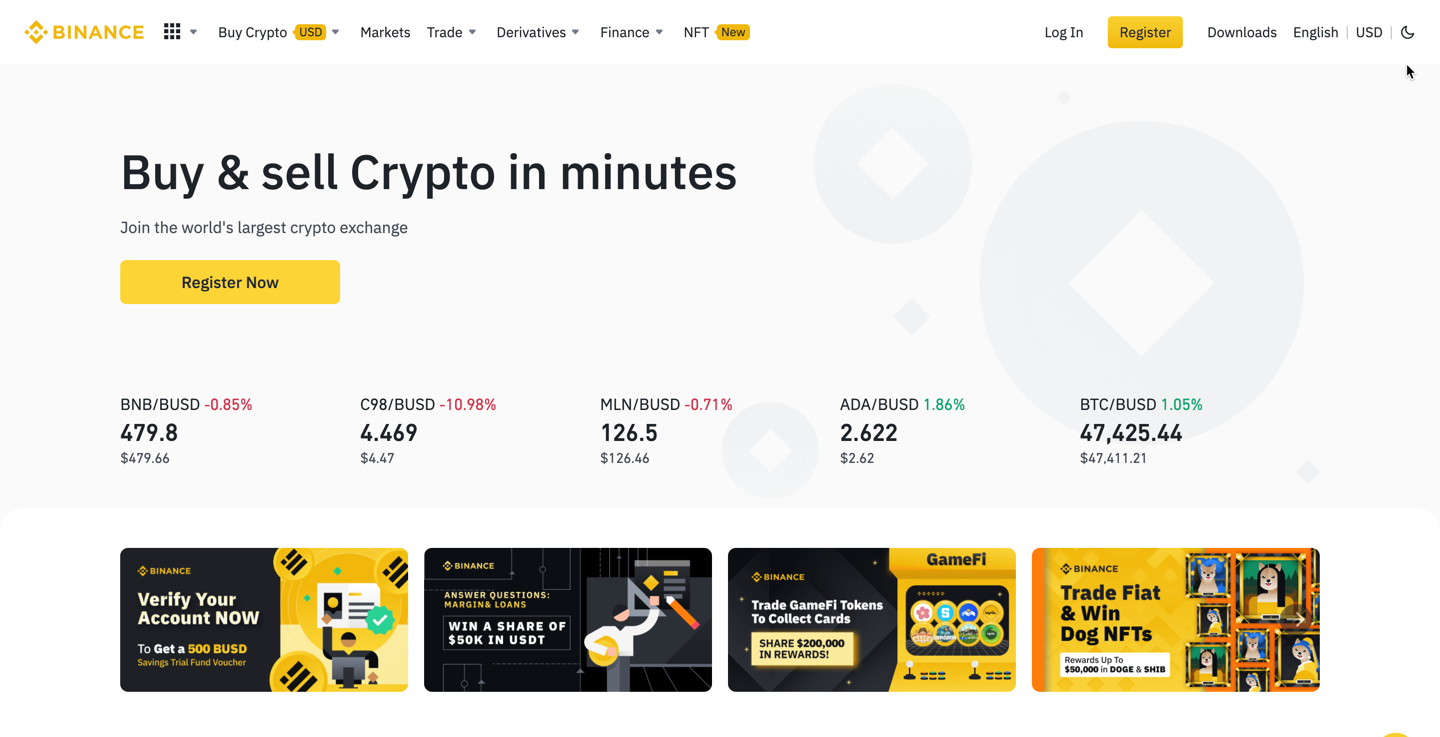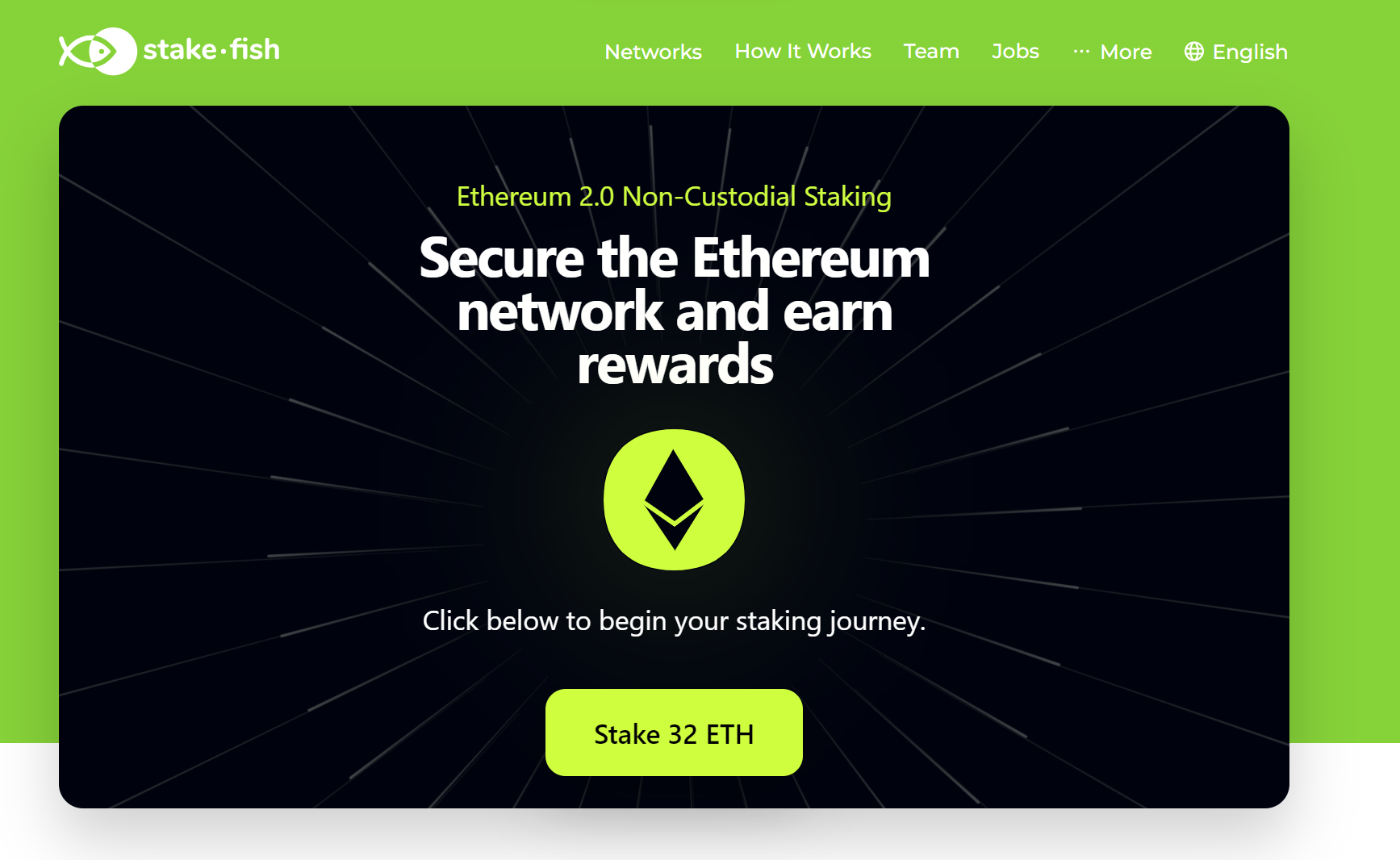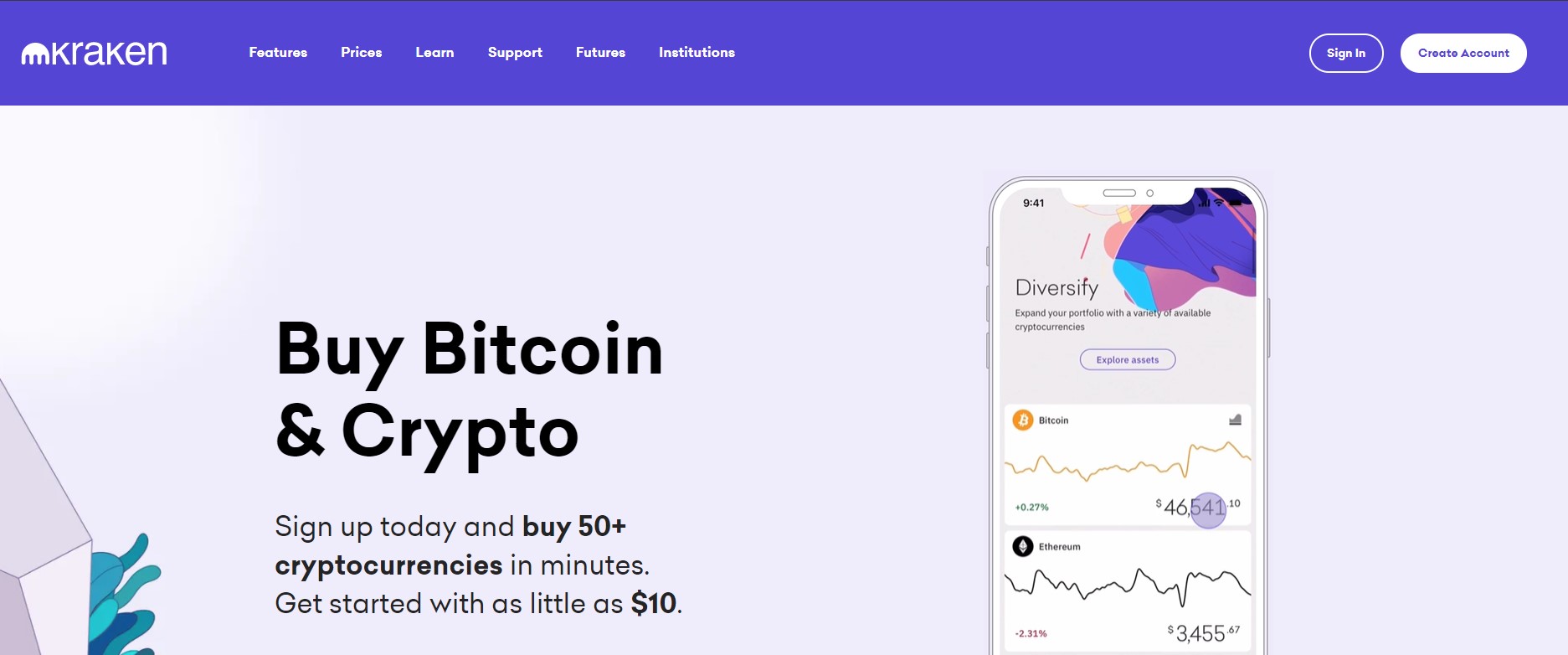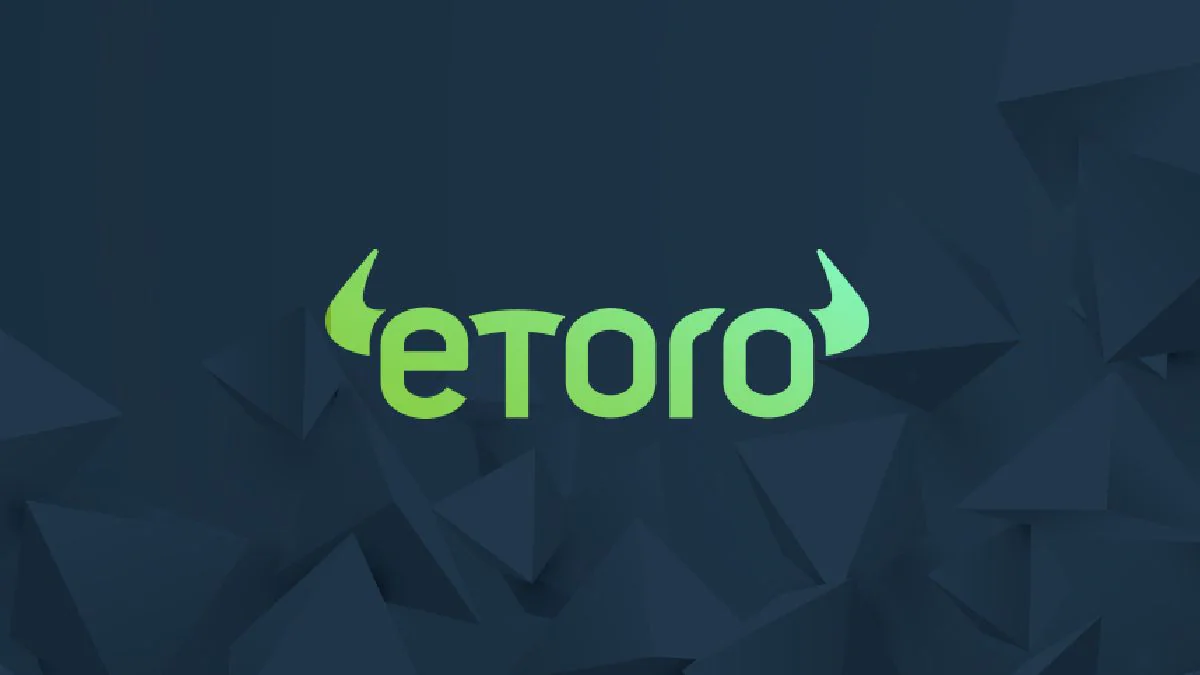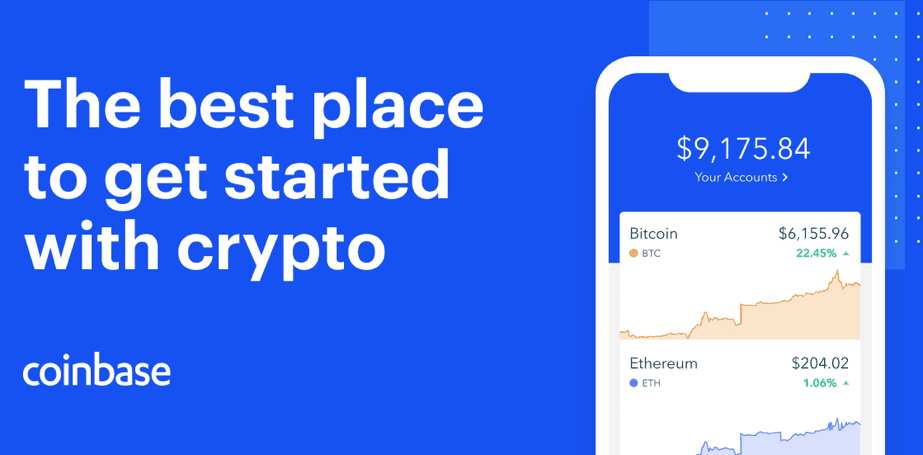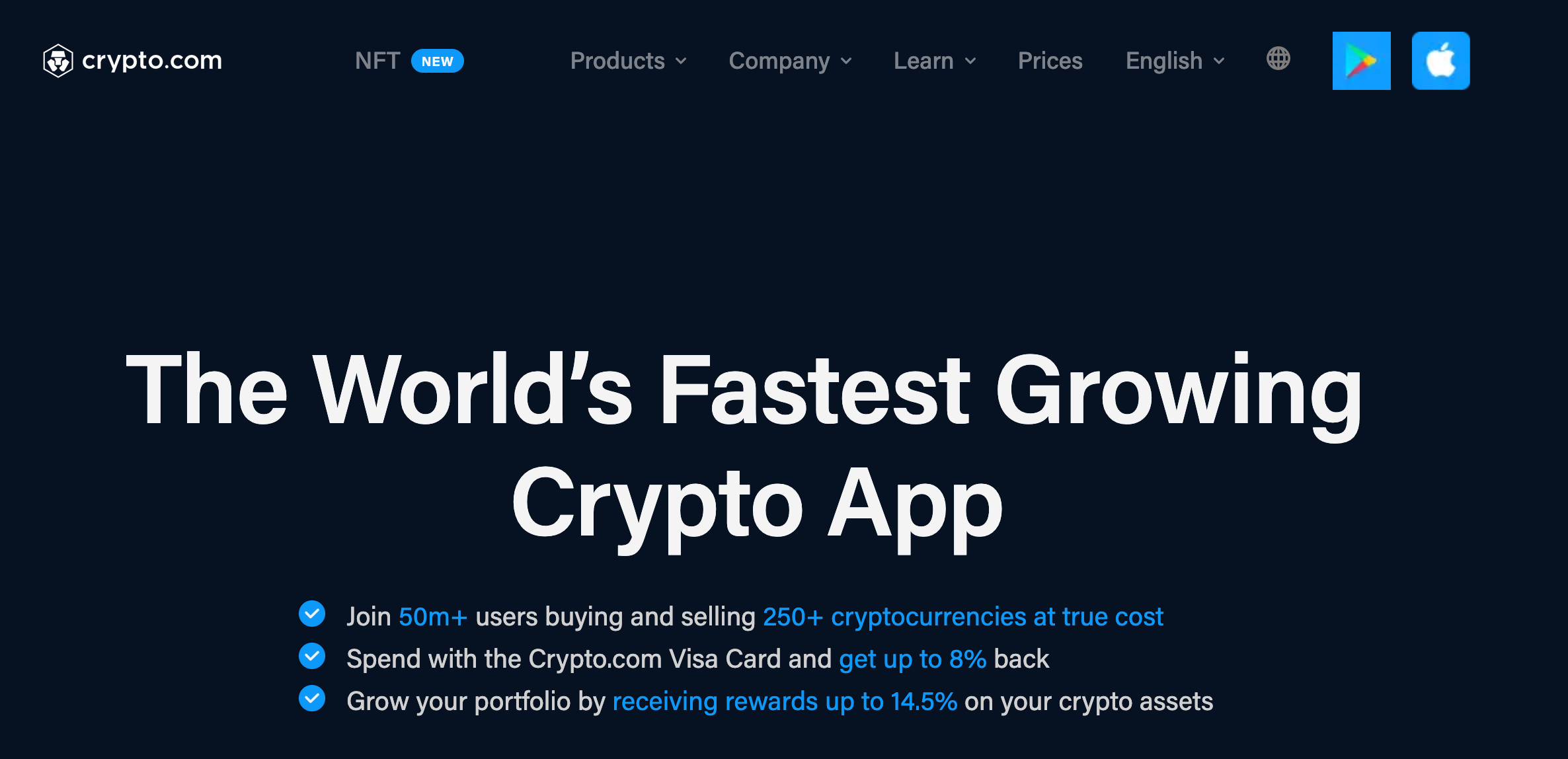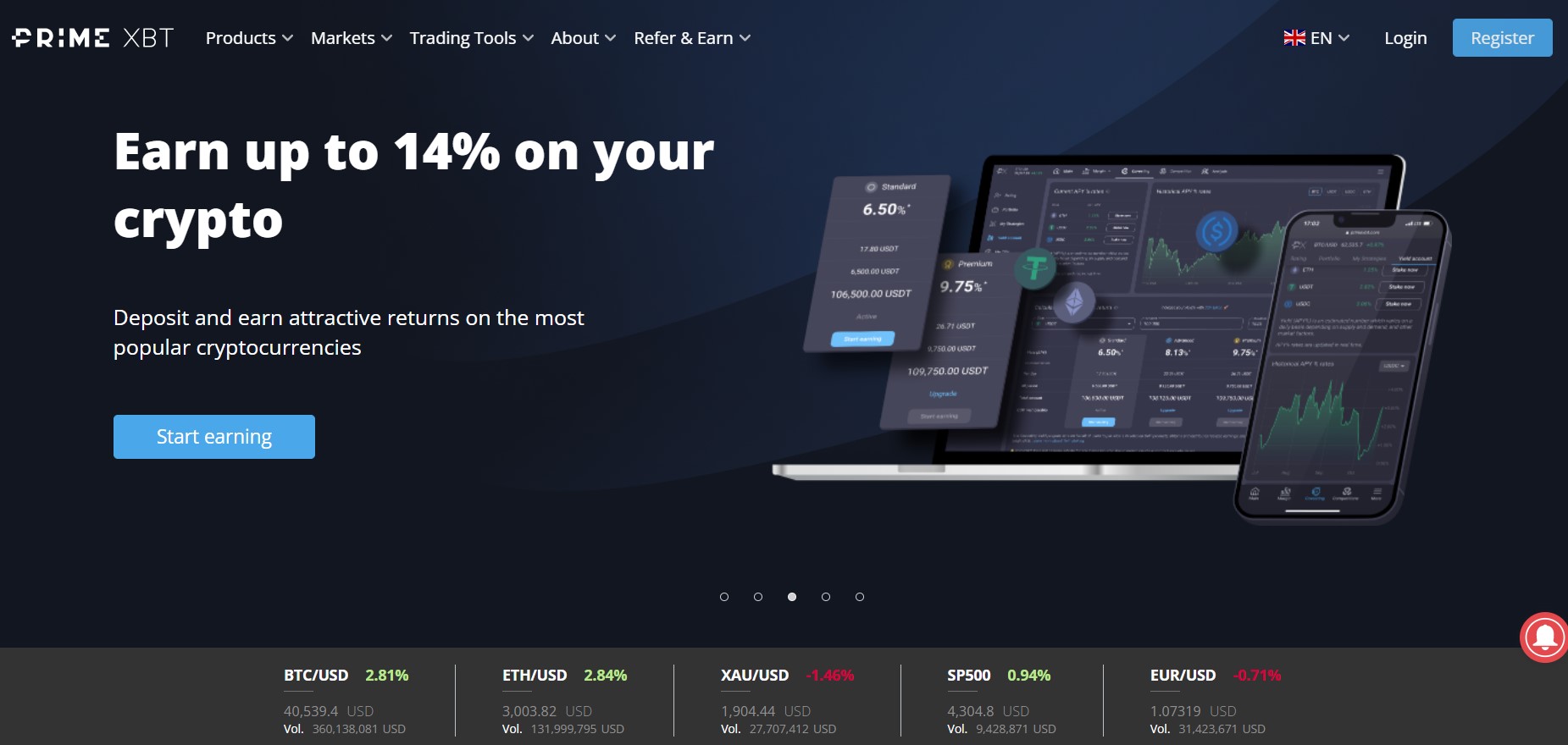Much like your fiat bank account, crypto staking platforms offer you the chance to lock up your coins and earn staking rewards for the time you have them there. Staking removes the need to continuously purchase expensive hardware and does away with the energy costs that might come with running it.
This article explores these platforms keeping in mind some of the requirements of a good staking platform, namely, lock-up terms, yields offered, and what tokens are supported.
It is also a good idea to understand whether your platform of choice holds any regulatory licences which give the whole operation an extra seal of approval.
So let’s get started
Best Crypto Exchanges For Staking
- Bybit
- Binance
- Stake.Fish
- Kraken
- eToro
- Coinbase
- Crypto.com
- PrimeXBT
#1. Bybit
Similar to Binance, Bybit has both flexible and fixed products so you can choose how you want to earn your staking rewards. With the savings plan, there is no compounding available so you would have to manually reinvest your earnings back into the pool to keep the rewards coming.
You can get up to 4.25%-5.5% for stablecoins, and 1.5%-1.75% on regularly staked coins like ETH and BTC for their 60-day staking period. The APY Booster functionality allows you to get an additional rate of interest on your crypto staking. This is added to the original APY advertised on the crypto staking platforms.
Another form of earning rewards is liquidity mining where you can add your coins as liquidity and in turn earn rewards derived from swap fees in the pool. The amount of rewards you earn is dependent on the number of coins added as your share in the pool is increased.
Bybit, as is the case with Binance, does not charge any fee to stake or unstake your coins so you won’t lose out on any of your earned passive income.
As of writing this, there is a 666% APY on Caduceus ($CMP) with a staking pool limit of 1,133,000 CMP and less than half of it is filled up. This is just to give you an idea of the out-of-the-world APYs on offer in these staking pools.
With the Dual Asset Mining staking process, you can bet whether the price of your asset will go up or down in the predefined period. If the settlement price at the end of the period is higher than the benchmark price, you get paid in stablecoins (USD), and if it is lower than the benchmark price, you get paid in ETH, BTC, BIT etc. So it’s a win-win either way. To know more check this Bybit review.
#3. Binance
Apart from being one of the leading crypto exchanges, Binance also offers a staking platform that has over 100 different coins offering staking rewards that can get you up to 3.78% interest on stablecoins, and up to 150% on other coins.
Binance offers locked staking for a variable time ranging from 10, 30, 60, to 90 days so that you can decide how long you want your coins to remain with the platform. The highest yields are on short-term lock-ups and other promotional coins that have been newly added to the staking platform.
Every staking pool has maximum allocations so you need to time your move or you could miss out on a juicy deal. These APYs change daily and the higher ones last for less than a month. In place of keeping your money in a regular savings account earning you single-digit interest, it is in your best financial interest to earn up to 98% YoY interest for your investment.
If you are not sure when you are going to need your coins again, there are options for flexible savings accounts where you can unsubscribe and redeem the assets when you want to. This is suitable for short-term earning.
For Locked Savings accounts, your crypto assets are locked in for a fixed period which then gives you higher staking rewards. In the case that you decide to end your Locked Savings before the end of the lock-in period, all the rewards accumulated until then will be lost.
One of the best things is that Binance does not charge any staking fee for either the staking or the unstaking operations. To find out more, have a look at this detailed Binance futures review.
#4. Stake.Fish
Binance and Bybit are examples of custodial staking services where for the duration of your staking, the staking platform is the one that owns your coins and they are returned to you at the end of your staking period.
Stake.fish is one example of the non-custodial staking services that run public validator nodes. You can get paid up to 20% on your staked Ethereum, Polkadot and Cosmos whereas staking your Tezos and Cardano will give you up to 12% APY.
When you stake with a non-custodial service, your coins are then a part of a smart contract on the blockchain your coin belongs to. Getting your coins out of the smart contract and back into your wallet will depend on how the contract is written and other terms and conditions applicable.
In addition to this, they aim to make it easy for first-timers to stake crypto with detailed step-by-step video guides.
These nodes are for coins that run on the PoS (Proof-of-Stake) algorithm. You assign your crypto coins to these validator pools, and they use them to verify transactions on the blockchain and in turn pass on the rewards to you.
In addition to these validator nodes, Stake.fish also runs a validator project called grantfish on the Cosmos network that uses any staked coins to support projects in the ecosystem like CosmWasm, Chainapsis, Unslashed Finance, and Everett Protocol.
This becomes helpful when you support staking in a project and the project’s value takes off. Suddenly your crypto portfolio is worth more in fiat currency than it was a couple of months ago.
It is not the most straightforward one-click solution like a lot of the others on this list but it does allow you to stake right from your crypto wallet like a hardware wallet. This enables people without the knowledge or funds to set up their validator nodes to get in on the game and earn passive income. If you are staking Cosmos ($ATOM) with the platform, Stake.fish keeps 4% of the rewards earned and you get the rest of it.
Stake.fish has promised to run validator nodes on NuCypher, Skale, Harmony, Audius, Celo, and Elrond so you should stay tuned for those announcements. If you are looking for a place to stake any of these coins, Stake.fish should be your staking service provider.
#5. Kraken
As far as crypto staking platforms go, Kraken is right up there in terms of ease-of-staking. You are allowed to stake and unstake when you want. The staking rewards can be earned as payouts twice every week.
Currently, there is a list of 17 coins that can be staked on their crypto staking platform with the APY that can go up to 23% for Kava ($KAVA). The platform itself does not charge any fee for its staking and unstaking services.
You have the option of on-chain staking where your staked coins are delegated to blockchain validators that run the nodes for your coin of choice and off-chain staking where your coins are delegated to internal Kraken programs. In both of these cases, your coins are returned to you along with your rewards when you unstake.
In the case of off-chain staking, geographical restrictions come into play and not everyone can participate in this activity. As of writing this, the list of restricted countries includes but is not limited to the United States, the United Kingdom, Sweden, France, and Japan.
Something to keep in mind is that the interest rates are higher for off chain staking compared to its on chain counterpart and it makes staking cryptocurrency easier for otherwise unlikely examples like Bitcoin, USD, and EUR.
If you want to stake with Kraken, KYC is going to be mandatory so be ready with your documents to make the process a lot quicker. To learn more, here is a Kraken review that you can have a look at.
#6. eToro
eToro supports the staking of Cardano ($ADA), Tron ($TRX), and Ethereum ($ETH) in select countries and you can earn up to 20% APY on these assets. A user needs to hold ADA for a minimum of nine days for Cardano and seven days for Tron to be able to earn rewards from the staking process.
There are no such restrictions for Ethereum and you can start earning staking rewards from the next day onwards. The rewards you receive in your account, and the commission charged by the crypto staking platform are dependent on the user’s membership status.
New to crypto trading? Learn What happens when crypto futures contracts expire?
For instance, if you are part of the Bronze members club, you get paid 75% of the crypto rewards, 85% if you are in the Silver, Gold, and Platinum club, and 90% for the Diamond and Platinum+ members. The rest of this percentage is kept by the platform as commission.
The method of dispersing these rewards includes taking a daily snapshot of the user’s wallet for a month, calculating the average daily amount by dividing the sum of the daily snapshots by the number of days in the month, and then calculating the passive income by using the percentage yield for the staking coins and the user’s tier in the eToro club.
It makes sense to use this crypto staking platform if you are already associated with eToro to reap maximum benefits.
eToro does not allow its US users to receive any rewards for staking and the rules are similar for their UK users who are not eligible to receive any staking rewards if they have signed up on or after February 8, 2022 (for Cardano and Tron) or February 1, 2022 (for Ethereum).
#7. Coinbase
As of writing this, Coinbase has six digital assets that can be staked. Their Ethereum staking program gives you rewards of 3.28% APY and you can get 5.75% APY for staking Algorand ($ALGO). The other available staking coins are Cardano ($ADA), Solana ($SOL), Cosmos ($ATOM), and Tezos ($XTZ).
You can transfer the staking coin from an external wallet to your Coinbase wallet for a coin that is supported on the platform. Coinbase does take a 25% commission for taking care of the process after you click the ‘Stake!’ button and earn interest on coins that would otherwise be lying idle.
For people who like to be cautious with the crypto staking platform they are working with, Coinbase has the US government’s seal of approval for their platform which includes offering staking services. It is regulated by the SEC in addition to being a publicly-traded company listed on the NASDAQ.
As a beginner, it is easy to get started with Coinbase as it requires having your identity verified, maintaining the minimum balance for the staked coin, and holding your currency on Coinbase.com (rewards are not available on Coinbase Pro).
If you are a customer in the USA and receive over $600 by staking crypto with Coinbase, you will be sent a 1099-MISC that will be helpful come tax season.
Coinbase also runs its node validators for PoS coins that allow them to earn a larger share of the rewards due to the combined size of their staking capital. These rewards are then redistributed back to each staker according to how much they have contributed.
#8. Crypto.com
If you are looking to stake your crypto with Crypto.com, it will help to acquire some of their native token $CRO. The staking rewards increase with the amount of CRO tokens staked on the platform, the time you have locked your coins (the longer the better!), the tier your account is in, and the asset itself.
With Crypto.com, the staking reward is calculated daily and is distributed every seven days directly to your account. They do have varying staking periods ranging from the flexible plan to 1 month, or 3 months so you can choose what timeline fits your staking style.
Recommended read: What is crypto futures trading?
You can get up to 12.5% in crypto staking rewards with your Polkadot ($DOT) in the app wallet for 3 months and 4,000-40,000 $CRO staked.
As you can see, Crypto.com requires that you stake its native crypto tokens for better rewards on its staking program. It has 3 tiers of <4,000 coins staked, 4,000-40,000 coins staked, and 40,000 or more coins staked.
This is a bit of a hassle to do but if you are confident in the future of $CRO as a part of your digital assets, and would have it in your portfolio anyways, then go right ahead.
Crypto.com has also introduced the concept of soft staking which is different from the one described above as it requires you to transfer your coins from the app wallet to the exchange wallet. The process is seamless and is completed without any fee or delay.
For the soft staking options, there are fewer rules in terms of when you can withdraw your $CRO or the staked coins. You are rewarded according to your wallet balance at the end of every day (22:00 UTC) and your rewards are disbursed by 00:00 UTC. Even with this form of on chain staking, a user gets a higher APY and other benefits if they have $CRO staked with the platform. You can also have a look at this Crypto.com review to know more.
#9. PrimeXBT
PrimeXBT only allows you to stake three coins out of your crypto holdings, namely Ethereum ($ETH), and stablecoins like USDC, and USDT. There is a minimum and maximum amount of coins that can be allocated to the staking platform. The minimum is 0.04 ETH, 100 USDT and 100 USDC while the maximum is 12 ETH, 50,000 USDT, and 50,000 USDC.
The interest for the coins is not fixed and varies daily owing to the demand, supply and other factors like volatility, lending, or trading volumes on the exchange. Currently, these numbers range from 0.17% to 0.37%
Even though the platform does have crypto staking, the interest rates on the ETH staking operation do not hold a candle to any of its competitors so I genuinely do not see a reason why someone would take away their ETH from a Binance or Bybit to invest in PrimeXBT’s staking platform.
Any opening or closure staking requests placed during the day are processed once a day at 00:00 UTC. As long as the maximum staking limit is not reached, you can have multiple stakings open.
Their crypto staking venture is run by Covesting and a user can get extra perks by staking the $COV token on the platform.
According to the website, it reduces your fees (by up to 100%) when you look to follow a trader for copy trading, increase the followings’ profit share by decreasing the platform’s profit distribution share, extending or lifting the following limit for each separate strategy, reduce trading fees for strategy managers, and most important to the context of this article, increase the crypto staking yield APY%.
FAQs
– What platform is best for staking crypto?
When you are looking for the best crypto staking platform, it should tick a few boxes in terms of staking method, low staking fees, lock-up terms, monthly staking yield, and whether your coin of choice is available.
As a custodial staking service, Binance should be your crypto staking platform of choice. It has varying periods to make sure crypto staking will work for you. You can stake for a week, a month, or 9 months if you are confident that you are not going to need those coins back in a hurry.
If you are looking for a non-custodial service that does not keep your coins on the platform but instead delegates them to validator nodes and then passes on the rewards to you, Stake.Fish is your cryptocurrency staking platform of choice. It only keeps 8% of the Tezos you receive as a reward and the fees differ from coin to coin.
If you are already invested in FTT or CRO and have a positive outlook on their future, their native exchange supports staking and you should be looking at that for your staking rewards. FTX and Crypto.com will give you extra perks for staking even a stablecoin like a USD coin. For the other coins out there, the trading platform has options to earn passive income.
There are other forms of staking present in the vast expanse of cryptocurrency. Defi staking and yield farming can be performed without the need for a centralised crypto staking platform. You can log in to platforms like SushiSwap or PancakeSwap with your custodial wallets like TrustWallet or MetaMask and pay nominal staking fees to get the advertised rewards straight back into your wallet.
This is a decentralized form of staking and as such carries the same pros and cons of cryptocurrencies like not having downtime unless there is a 51% attack.
– What exchange can I stake crypto?
In the crypto world, an exchange allows you to use your fiat currency as a payment method to buy cryptocurrency. There are also some exchanges that in addition to this, let you stake your coins to earn passive income.
With these exchanges, you are sometimes charged small transaction fees for this operation. The best staking coins tend to be the newer ones that are added to the staking platform and you are incentivised to stake your crypto assets at least for a short duration.
Exchanges like Bybit, Crypto.com, Phemex and Binance have their staking platforms that help users earn interest with their coins staying on the crypto exchange. This can be in the form of off-chain staking where the crypto exchange uses these coins to lend out to others or locked staking where you are not allowed to withdraw the coins before a set period.
In the case that you do withdraw before the time limit, you lose all of your rewards.
– What wallet is best for staking crypto?
Wallets in general allow you to sleep soundly knowing that your coins can’t be compromised until you give your 12-phrase key to a malicious actor. If you are looking for a custodial wallet where you can store as well as stake your crypto, Binance-owned Trust Wallet is still the clear front runner in the eyes of crypto aficionados.
It’s one of the only places that allows the staking of BNB at 4.91% for the obvious reason that Binance owns the platform. If you are quick to get there, there is a 398% APR on EVMOS. The list of coins that can be staked is frequently changing with the number currently being at 9.
There are other crypto staking wallets also that allow you to stake crypto but Trust Wallet is a one-size-fits-all solution and one that I have settled on after weighing the pros and cons of the other services.
Other options include Exodus, Trezor wallet and Ledger wallet. Keep in mind that out of these, only Ledger has the option for a hardware wallet and if that is what you prefer, then you know where to go.
Conclusion
What you do need to look at is that the mentioned APY will only be awarded to you in the same coin that is being staked. Even if you get a large APY but the underlying asset’s value keeps falling, the staking exercise will be futile.
Every crypto staking platform maintains its edge in its unique ways but making your portfolio work like crypto savings account earning you income is a non-negotiable thing to do.
With all of these points in mind, Binance is your best staking platform and you should let that be your stepping stone into the world of crypto staking. If you are looking to stake right from your wallet, a Trust Wallet account would come in handy.
If there is anything you will take away from this article, it should be to log in to your Binance account, navigate to the Earn section, and then the Staking section to see what kind of APYs you have been missing out on and rectify your mistake immediately.
- Is Bitcoin Real Money?: Understanding Different Types Of Money - June 28, 2024
- Bitcoin Transaction Accelerator: 5 Services to Unstuck Your BTC - September 23, 2023
- What Is Bitcoin Private Key? Everything You Need To Know !! - June 2, 2023

